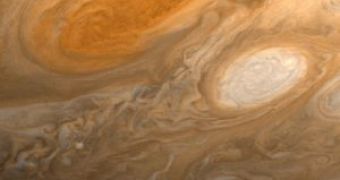A hurricane of a typhoon is a large, highly energetic vortex of air. The air moves at high speeds in a circular but irregular and turbulent fashion. Scientists have long debated the mechanism by which such large scale vortex structures form from smaller vortices.
How does the relatively small kinetic energy of small vortexes accumulate? One popular idea was that small vortexes gradually merge into larger ones. However, according to the second law of thermodynamics, in a closed system, the energy tends to dissipate and not to accumulate. Thus, this scenario would need an external energy input, such as the sunlight or something else, which would drive the merger process. But such a sufficiently large external energy source doesn't seem to exist.
However, Shiyi Chen and colleagues from the Johns Hopkins University, from Los Alamos National Laboratory and from Peking University, have proposed a new mechanism for the cyclones' formation called inverse energy cascade. Their idea is that the large vortexes are formed via a process of one vortex sucking up the energy from other slightly smaller vortices and thus growing larger and larger. The large vortices drain the energy of the smaller ones, squeezing them dry. The process isn't a merger but a "hostile takeover".
The second law of thermodynamics favors the disappearance of the small vortexes and in a certain metaphorical sense the vortex that grows uses this tendency: the energy of the smaller vortices dissipates into the larger vortex. Eventually, the energy of the large storm also dissipates - as the storm ends - but the entire process, starting from a large number of small vortexes to the eventual disappearance (dissipation) of all the vortexes, goes through an intermediary dramatic stage: the large storm.
Thus, the entire process (and its end result) is directed by the second law of thermodynamics and not by some external energy source, but the exact path of the entire process isn't as straightforward as one might have assumed. The entire process involves an intermediary phase of self-organization. This intermediary step is only temporary but nevertheless it might last some time. The larger the vortex, the longer it lasts. For example, large storms such as Jupiter's Red Spot have been observed for the first time around 340 years ago and it doesn't show any sign of diminishing.
The scientists tested their model both on a computer simulation and in the lab. According to the authors, the work provides quantitative models of how large-scale circulations incorporate a "population" of small-scale vortices. These results will also help to model and predict the formation of large-scale vortices in atmospheres and oceans.
Photo credit: Turbulence near the Jupiter's Great Red Spot (NASA)

 14 DAY TRIAL //
14 DAY TRIAL //